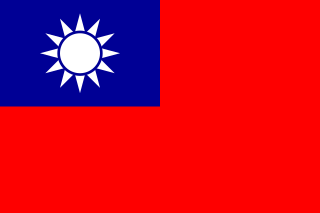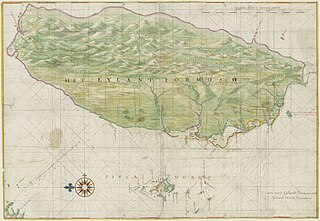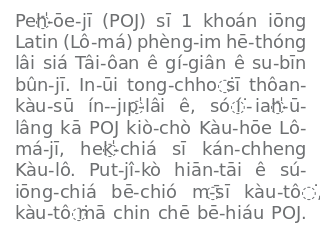
Taiwan, officially the Republic of China (ROC), is a country in East Asia. It sits at the junction of the East and South China Seas in the northwestern Pacific Ocean, neighboring the People's Republic of China (PRC) to the northwest, Japan to the northeast, and the Philippines to the south. The territories controlled by the ROC consists of 168 islands with a combined area of 36,193 square kilometres (13,974 sq mi). The main island of Taiwan, formerly known as Formosa, has an area of 35,808 square kilometres (13,826 sq mi), with mountain ranges dominating the eastern two-thirds and plains in the western third, where its highly urbanised population is concentrated. The capital is Taipei, which, along with New Taipei City and Keelung, forms the largest metropolitan area of Taiwan. Other major cities include Kaohsiung, Taichung, Tainan, and Taoyuan. With 23.45 million inhabitants, Taiwan is among the most densely populated countries in the world.

The history of the island of Taiwan dates back tens of thousands of years to the earliest known evidence of human habitation. The sudden appearance of a culture based on agriculture around 3000 BC is believed to reflect the arrival of the ancestors of today's Taiwanese indigenous peoples. From the late 13th to early 17th centuries, Chinese people gradually came into contact with Taiwan and started settling there. The island was colonized by the Dutch in the 17th century, followed by an influx of Hoklo people including Hakka immigrants from the Fujian and Guangdong areas of mainland China, across the Taiwan Strait. The Spanish built a settlement in the north for a brief period but were driven out by the Dutch in 1642.

Taiwanese indigenous peoples, Formosan people, Austronesian Taiwanese, Yuanzhumin or Gaoshan people, are the indigenous peoples of Taiwan, who number about 569,000 or 2.38% of the island's population. This total is increased to more than 800,000 people if the indigenous peoples of the plains in Taiwan are included, pending future official recognition. Recent research suggests their ancestors have been living on Taiwan for approximately 6,500 years. A wide body of evidence suggests Taiwan's indigenous peoples maintained regular trade networks with regional cultures before the Han Chinese began settling on the island from the 17th century.

The term "mainland China" is a geopolitical term defined as the territory governed by the People's Republic of China excluding dependent territories of the PRC and other territories within Greater China. By convention, the territories that fall outside of the Chinese mainland include:

The New Party (NP)(Chinese: 新黨; pinyin: Xīn Dǎng; Hakka: Sîn Tóng), formerly the Chinese New Party (CNP), is a Chinese nationalist political party in the Republic of China (Taiwan).

123 Democratic Alliance was a pro-Kuomintang political party in Hong Kong. Established in 1994 by a group of pro-Taiwan, pro-democracy and pro-business politicians, it aims at striving for the unification of China, to strive for a free, democratic, and wealthy China, and to establish a democratic and prosperous Hong Kong. It remained a small party until it was dissolved in 2000 due to the lack of financial support from the Taiwan government, after the Kuomintang's defeat in the presidential election.
The China Post (英文中國郵報) was an English-language newspapers published in Taiwan, alongside the Taipei Times and the Taiwan News. The China Post was established by Mr. and Mrs. Y. P. Huang in 1952.

The Anti-Secession Law is a law of the People's Republic of China, passed by the 3rd Session of the 10th National People's Congress. It was ratified on March 14, 2005, and went into effect immediately. President Hu Jintao promulgated the law with Presidential Decree No. 34. Although the law, at ten articles, is relatively short, Article 8 formalized the long-standing policy of the PRC to use military means against Taiwan independence in the event peaceful means become otherwise impossible. The law does not explicitly equate "China" with the People's Republic of China.

The Kingdom of Tungning, also known as Tywan by the British at the time, was a dynastic maritime state that ruled part of southwestern Formosa (Taiwan) and the Penghu islands between 1661 and 1683. It is the first predominantly Han Chinese state in Taiwanese history. The kingdom was founded by Koxinga after seizing control of Taiwan, a foreign land outside China's boundaries, from Dutch rule. Zheng hoped to restore the Ming dynasty in Mainland China, when the Ming remnants' rump state in southern China was progressively conquered by the Manchu-led Qing dynasty. The Zheng dynasty used the island of Taiwan as a military base for their Ming loyalist movement which aimed to reclaim mainland China from the Qing. Under Zheng rule, Taiwan underwent a process of sinicization in an effort to consolidate the last stronghold of Han Chinese resistance against the invading Manchus. Until its annexation by the Qing dynasty in 1683, the kingdom was ruled by Koxinga's heirs, the House of Koxinga, and the period of rule is sometimes referred to as the Koxinga dynasty or the Zheng dynasty.

Pe̍h-ōe-jī, also sometimes known as the Church Romanization, is an orthography used to write variants of Southern Min Chinese, particularly Taiwanese Hokkien and Amoy Hokkien.

Chu-yuanLee is a Taiwanese architect born in Guangdong, Republic of China. He received his bachelor's degree from National Cheng Kung University (Tainan) and his master's from Princeton University in the US. He directed the design of Taipei 101, the world's tallest skyscraper at the time of completion, in 2004.
Taiwanese people may be generally considered the people of Taiwan who share a common culture, ancestry and speak Taiwanese Mandarin, Hokkien, Hakka or indigenous Taiwanese languages as a mother tongue. Taiwanese people may also refer to the indigenous peoples of the areas under the control of the Government of the Republic of China since 1945, including Penghu, Kinmen and Matsu Islands.
C. P. Wang is a Taiwanese architect. He received his bachelor's degree from Tunghai University in 1971 and his Master of Architecture from Washington University in St. Louis in 1973. He is co-principal of the architectural firm C.Y. Lee & Partners, located in Taipei, Taiwan. C.P. Wang was one of the prominent designers of Taipei 101, which was the world's tallest skyscraper from 2004 to 2010.

Yeung Kwong was a Hong Kong trade unionist and labour rights activist. He served as chairman of the Hong Kong Federation of Trade Unions (HKFTU) from 1962 to 1980 and as its president from 1980 to 1988. He played a leading role in the 1967 Hong Kong riots against British rule in Hong Kong.

Taiwan under Qing rule refers to the rule of the Qing dynasty over Formosa from 1683 to 1895. The Qing court sent an army led by general Shi Lang and annexed Taiwan in 1683. It was governed as Taiwan Prefecture of Fokien Province (Fujian) until the declaration of Fokien-Taiwan Province in 1887. Qing rule over Taiwan ended when Taiwan was ceded to Japan by the Treaty of Shimonoseki in 1895. There were more than a hundred rebellions during the Qing period. The frequency of rebellions, riots, and civil strife in Qing Taiwan led to this period being referred to by historians as "Every three years an uprising, every five years a rebellion."
There are many romanization systems used in Taiwan. The first Chinese language romanization system in Taiwan, Pe̍h-ōe-jī, was developed for Taiwanese by Presbyterian missionaries and promoted by the indigenous Presbyterian Churches since the 19th century. Pe̍h-ōe-jī is also the first written system of Taiwanese Hokkien; a similar system for Hakka was also developed at that time. During the period of Japanese rule, the promotion of roman writing systems was suppressed under the Dōka and Kōminka policy. After World War II, Taiwan was handed over from Japan to China in 1945. The romanization of Mandarin Chinese was also introduced to Taiwan as official or semi-official standard.
Vescornis is a genus of enantiornithine bird. One species is named, V. hebeiensis. The holotype fossil is in the collection of the Nanjing Institute of Geology and Paleontology, Chinese Academy of Sciences. Its catalog number is CAGS 130722. The fossil was found in Early Cretaceous rocks first attributed to the Yixian Formation, Senjitu, Fengning County, Hebei Province, China. However, later study of area geology showed that these rocks actually belong to the Huajiying Formation.
Throughout the 1950s and 1960s, land reform in Taiwan capped farm rents and redistributed farmland to Taiwanese tenant farmers. The reforms occurred in three main stages. First, in 1949, farm rents were capped at 37.5% of yields. Second, starting in 1951, public land was sold to tenant farmers. Finally, starting in 1953, large landholdings were broken up and redistributed to tenant farmers--a "land-to-the-tiller" reform.
Mainland Chinese or Mainlanders are Chinese people who live in or have recently emigrated from mainland China, defined as the territory governed by the People's Republic of China (PRC) except for Hong Kong, Macau, and the partly-PRC-controlled South China Sea Islands, and also excluding certain territories that are claimed by the PRC but not controlled, namely Taiwan aka the "Republic of China" (ROC), which is a state with limited recognition, and other associated territories that are ruled by Taiwan. The term also refers to historical groups of people of Chinese origin who immigrated to Hong Kong, Macau and Taiwan during the 20th century, especially in the context of specific historical events.

Taiwanese Braille is the braille script used in Taiwan for Taiwanese Mandarin (Guoyu). Although based marginally on international braille, most consonants have been reassigned; also, like Chinese Braille, Taiwanese Braille is a semi-syllabary.












